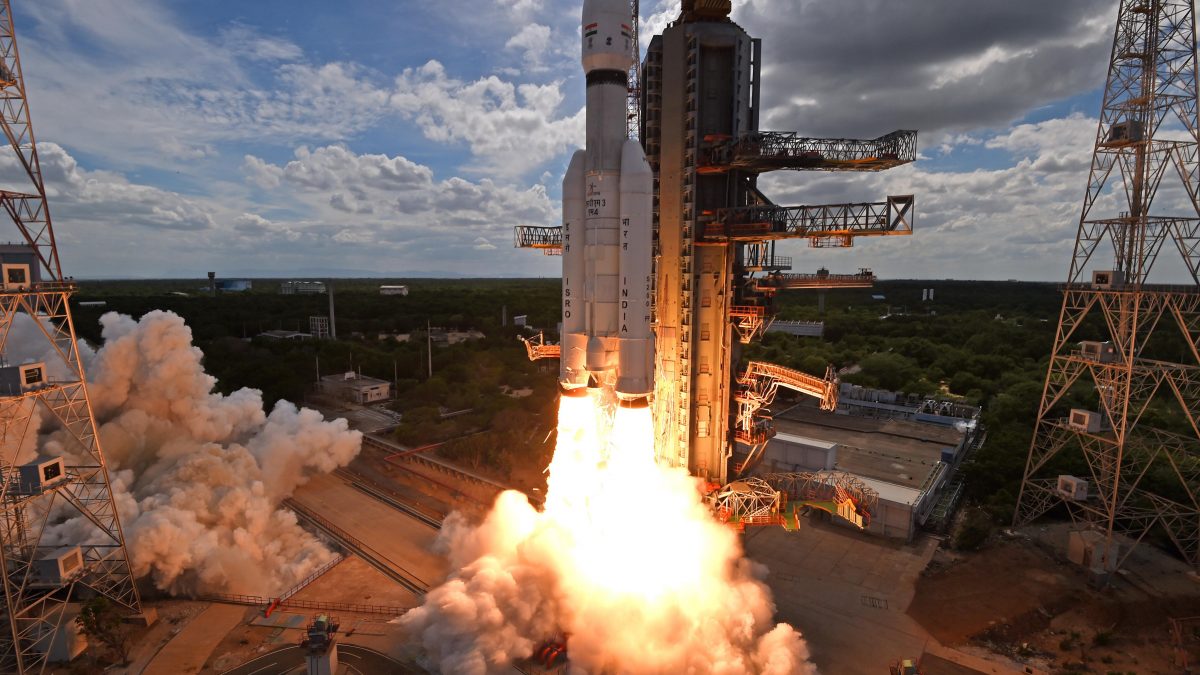After the successful Chandrayaan-3 moon mission, the Indian government approved the Chandrayaan-4 lunar mission in the Chandrayaan series. This demonstrates that the competitions to explore and expand and the dominance in space have intensified, evolving into a complex geopolitical arena marked by rivalry among great powers—namely the United States, China, Russia, and India.
This reflects technological ambitions and deep-seated fears rooted in who can dominate this contested domain, which is vast and unexplored in many ways. The major geopolitical players have ambitions and high-end technological prowess to demonstrate dominance and hegemonise the space for more utility.
The recent launch of the Qianfan constellation by China, alongside the ongoing advancements in space capabilities by the United States, Russia, and India, demonstrates how this great-power competition is shaping the future of space as a potential military domain.
China’s rise in the space sector is particularly noteworthy. On August 6, 2023, a Long March 6 (LM-6) rocket launched from the Taiyuan Satellite Launch Centre, carrying 18 satellites as part of the Qianfan constellation—an endeavour designed to rival SpaceX’s Starlink. This launch highlights China’s strategic pivot towards commercial space endeavours facilitated by non-state-owned companies like Yuanxin Satellite (SSST).
As China strives to establish itself as a leading space power by 2045, its increasing capabilities in satellite technology and space exploration signal a shift towards a more competitive posture in space to counter perceived threats from American advances.
Impact Shorts
More ShortsThe motivations behind China’s rapid space ambitions are multifaceted. The expansion of Starlink, with over 6,000 satellites launched in a few years, has created a sense of urgency within China, prompting concerns about national security and economic viability. Chinese state media have characterised Starlink as a potential monopoly in global communications, reinforcing the perception of a strategic rivalry. As China’s commercial space sector gains momentum, the country’s historical reliance on state-owned enterprises has evolved, indicating a newfound adaptability in the face of competition.
However, the space race is not confined to the Sino-American rivalry. Historically, Russia has been a significant space player and has developed counter-space technologies that challenged the US during the Cold War. Following a series of anti-satellite tests, Russia’s military initiatives have raised alarms regarding space weaponisation. The prospect of co-orbital weapons and the development of nuclear anti-satellite (ASAT) capabilities illustrate a dangerous trajectory that not only threatens existing satellites but also complicates international security dynamics.
The historical cooperation between the US and Russia is now strained by mutual distrust and military posturing, leaving the space domain increasingly fraught with competition rather than cooperation. The implications of this great power rivalry extend beyond technological advancements. As states pursue their security interests, the potential for conflict in space grows. The anarchic nature of the international system fosters a realist dilemma, wherein nations prioritise self-help measures to ensure their security. In this context, the militarisation of space seems inevitable.
The US and China have initiated efforts to develop space-based military capabilities, driven by fears of vulnerabilities posed by adversaries’ technological advancements. While traditionally maintaining a stance of neutrality in great power rivalries, India is now also asserting itself in the space race. India’s space program primarily focuses on socio-economic development, but recent developments indicate a pivot towards bolstering national security through space capabilities. The country’s successful ASAT test in 2019 demonstrates its commitment to enhancing deterrence, even as it continues to advocate against the weaponisation of space.
India’s approach reflects a nuanced understanding of the strategic environment, seeking to leverage space technology for military applications while prioritising peaceful exploration and global cooperation. The growing competition among these major powers raises critical questions about the future governance of space. The legacy of cooperation in space exploration—exemplified by initiatives like the Apollo-Soyuz handshake and the International Space Station (ISS)—is now overshadowed by a prevailing atmosphere of rivalry.
Political manoeuvring among the US, Russia, and China has hindered meaningful dialogue on space security, leaving a vacuum where multilateral agreements could provide frameworks for responsible behaviour in outer space. As states increasingly perceive space as a domain for military engagement, the risk of conflict escalates. The historical context reveals a shift from focusing on scientific cooperation to strategic competition, where technological supremacy serves national interests.
The Outer Space Treaty of 1967, which aims to prevent the militarisation of space, faces challenges in enforcement and interpretation in the current geopolitical climate. With the rise of counter-space capabilities and anti-satellite tests, the international community grapples with the implications of an unregulated arms race in space. The evolution of space competition is reminiscent of past geopolitical rivalries yet it also introduces unique challenges. The exponential growth of private space enterprises, particularly in China and the US, complicates traditional state-centric narratives.
The interplay between state and non-state actors raises questions about accountability, governance, and the future of collaborative endeavours. The increasing reliance on commercial entities for satellite technology and launch capabilities creates opportunities for innovation but also amplifies the risks of unchecked competition.
As nations vie for supremacy, the potential for conflict looms large in an environment characterised by distrust, mistrust, and strategic posturing. The realist dilemma of fear and self-help manifests in pursuing military capabilities and counter-space technologies, heightening the risk of conflict in the final frontier. Moving forward, the need for robust frameworks to govern space activities and facilitate cooperation among nations is more pressing than ever. The stakes in this new era of space exploration are high, and the choices made by major powers will significantly influence the trajectory of global security and the future of humanity’s endeavours in space.
The author is a PhD candidate at Jawaharlal Nehru University, New Delhi. The views expressed in the above piece are personal and solely those of the author. They do not necessarily reflect Firstpost’s views.


)

)
)
)
)
)
)
)
)



